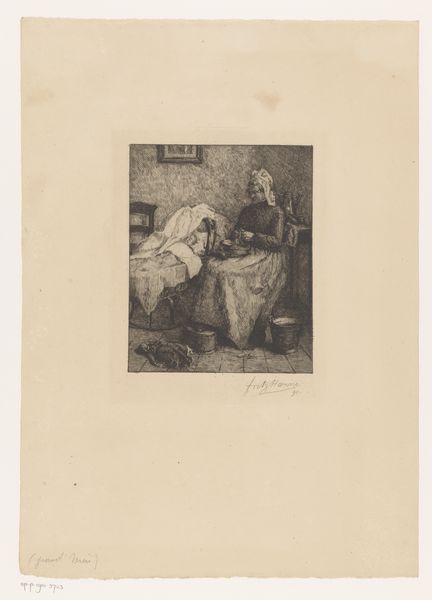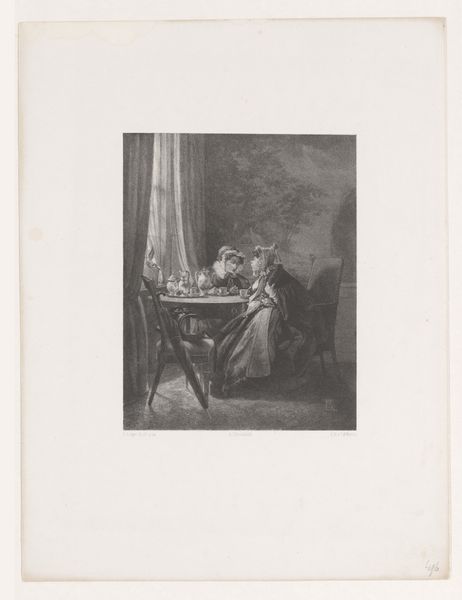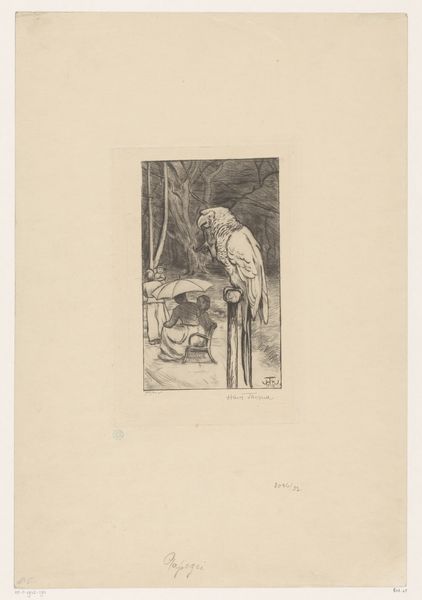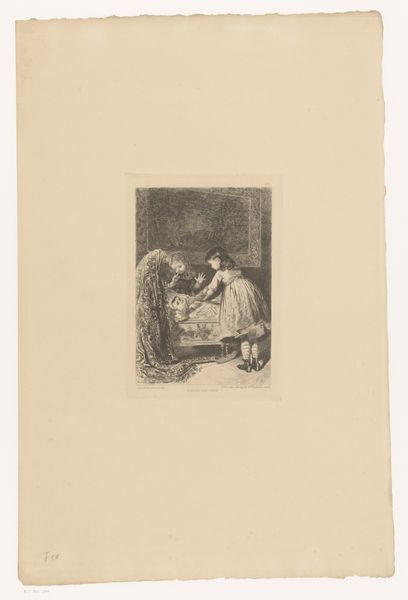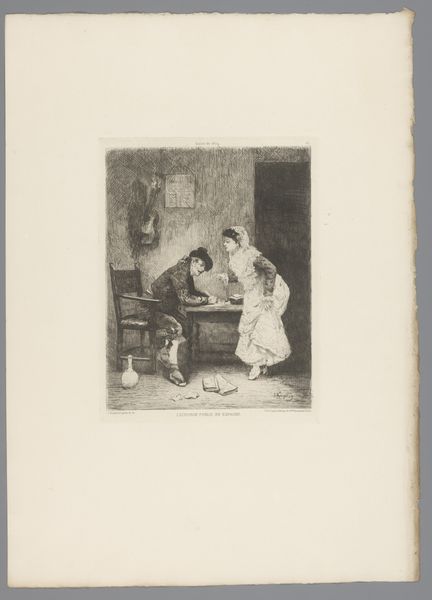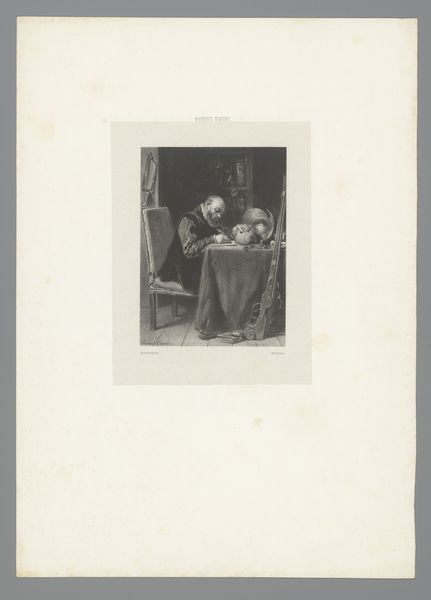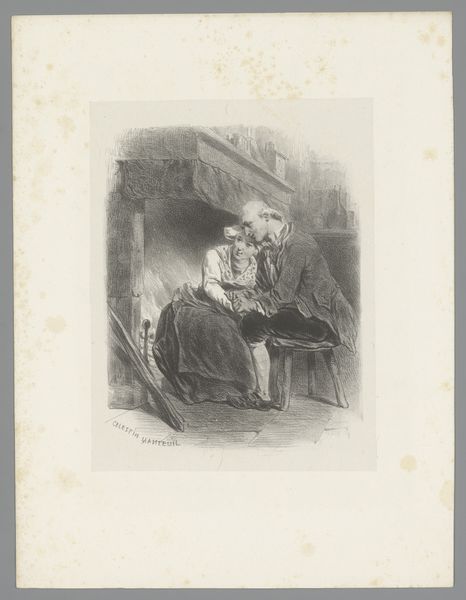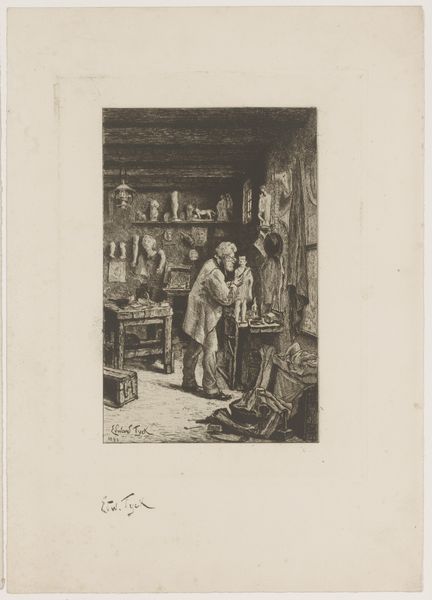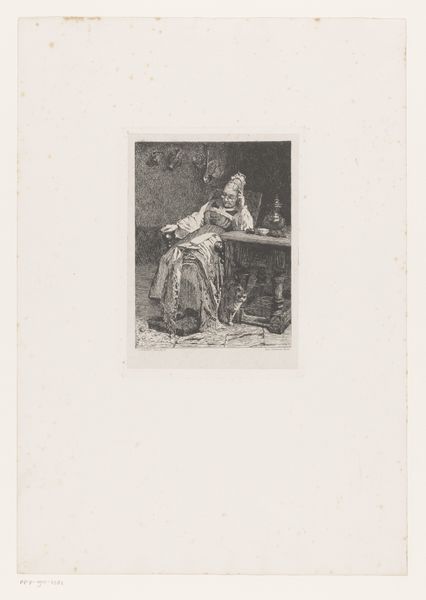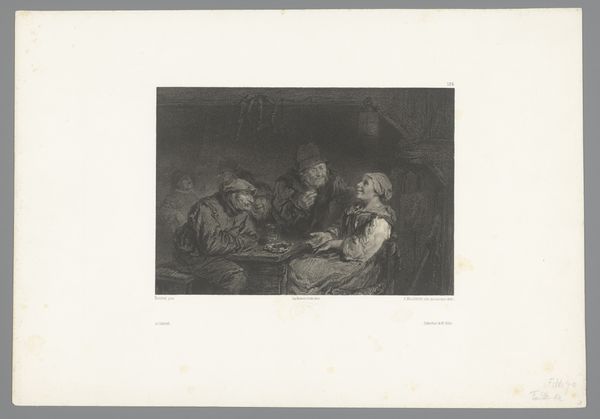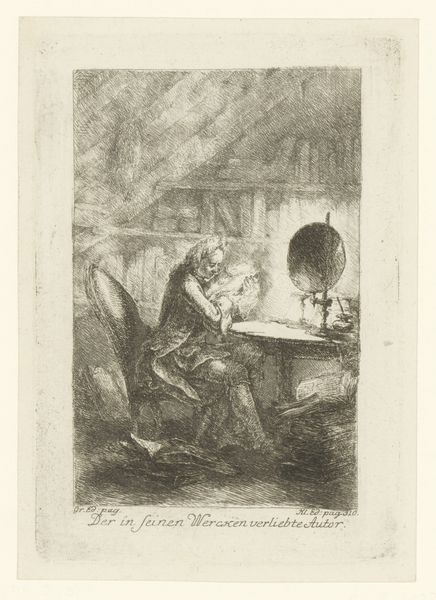
drawing, print, etching, paper
#
portrait
#
pencil drawn
#
drawing
#
ink paper printed
# print
#
etching
#
pencil sketch
#
paper
#
genre-painting
Dimensions: height 279 mm, width 199 mm
Copyright: Rijks Museum: Open Domain
Editor: Here we have Eugène Burnand's "Old Woman and Child at a Wash Tub," created in 1881 using etching on paper. There's a starkness to it, almost bleak, with the heavy shading and serious expressions. What do you see in this piece beyond the surface portrayal of domestic life? Curator: It's precisely this "bleakness" that arrests me. Burnand’s print isn't simply a genre scene, but a commentary on the lived realities of working-class women and children in the late 19th century. The act of washing, often depicted romantically, here speaks to labor and potentially to the burdens disproportionately shouldered by women, generation after generation. Consider the child: are they learning domestic skills or trapped in a cycle of poverty and toil? How does the contrast in light and shadow play into these themes of struggle and hope? Editor: That’s a powerful interpretation. I hadn't thought about it in terms of intergenerational burdens. The rough textures achieved through etching definitely reinforce that sense of hardship. Curator: Indeed. And by focusing on these everyday figures, Burnand elevates their stories, prompting a confrontation with societal inequalities. Think about how this contrasts with more celebratory depictions of women and childhood common at the time. Is Burnand making a statement about class, gender, or perhaps both? Editor: It makes me wonder about the artist's intentions. Was he trying to provoke social change, or simply documenting what he observed? Curator: It's likely a blend. Art often exists at this intersection, holding space for both observation and critique. Burnand uses the visual language of realism, with the immediacy of a print, to draw our attention to lives that might otherwise be overlooked. Ultimately, the impact of the image rests in the questions it raises about visibility, labor, and representation. Editor: This has definitely opened my eyes to viewing art through a different lens, considering its social and political context more deeply. Curator: That is art’s enduring power – its ability to spark dialogue and challenge us to confront the complexities of our shared human experience.
Comments
No comments
Be the first to comment and join the conversation on the ultimate creative platform.
